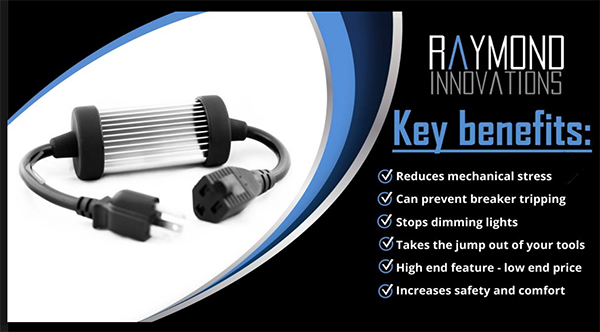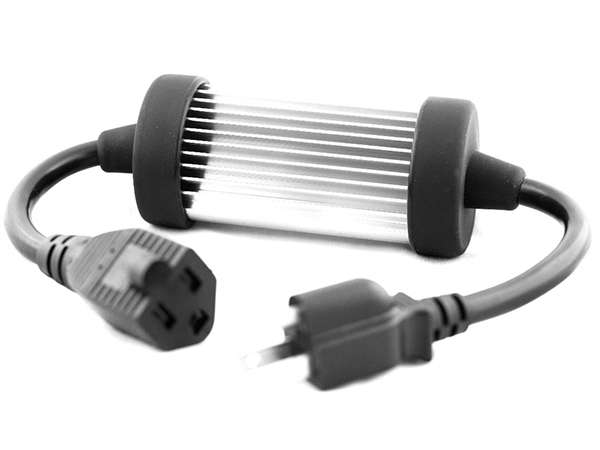
Remember when you first started using power tools with universal motors? There was that nervous anticipation of squeezing the trigger on your recip saw, circular saw or router and feeling the motor surge instantly to full power. It was probably unsettling, especially when “full on” meant the tool literally jerked to life in your hands.
Many corded power tools these days have variable-speed triggers and soft start features, to eliminate those “jackrabbit” starts — but certainly not all of them. And, if you still use your trusty older power tools without the updated electronics, there hasn’t been a practical solution to those jerky, hard starts.
That is, until now.
Last month, a new device called Soft Starter came to market that’s designed to help tame your more “spirited” power tools at startup. It’s a finned aluminum cylinder with a length of power cord on either end that plugs into the wall and your power tool’s cord. Will Hansen, inventor of Soft Starter, says the development process started in 2016 when he founded Raymond Innovations in Rapid City, South Dakota.

“I became mildly obsessed with finding a solution to the ‘hand grenade’ that was my compound miter saw when I squeezed the trigger,” Hansen recalls.
With degrees in electronics and biomedical equipment technology, and a career in clinical engineering, Hansen was confident that he could find a solution to what he calls the “obnoxious attribute” of universal-motor start-ups. In layperson terms, that sudden burst of power causing the tool to jerk is a 40 to 60 amp inrush of electrical current.
Aside from the unsettling effect of feeling it happen when you squeeze the trigger, Hansen says there are long-term consequences to the tool. “The inrushing current arcs and causes pitting on the power switch contacts,” he says. “The higher the current, the worse the pitting. Over time, this pitting gets bad enough that the switch will fail to transfer electricity through it, and the tool won’t turn on.”
This explains why mechanical power switches are one of the leading failure points on universal-motor power tools, Hansen explains. His solution was to add a resistive load to the power cord, which happens inside Soft Starter’s finned heat exchanger.
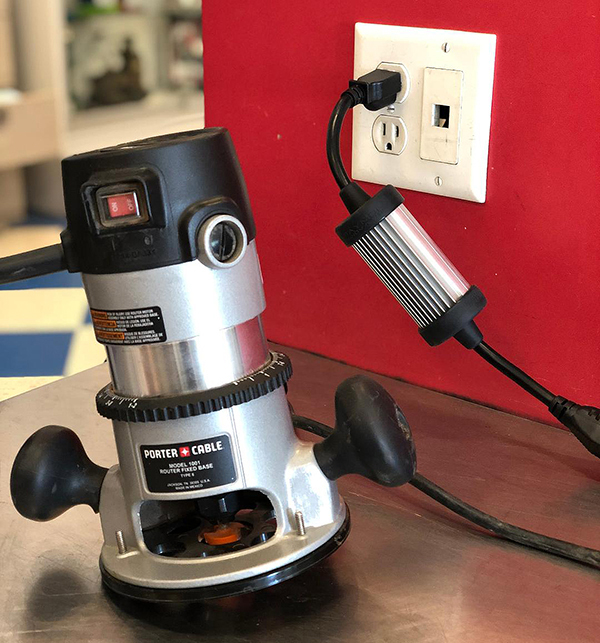
“The resistance value of this load rapidly drops to near zero as the internal temperature of Soft Starter increases: resistance creates heat, and heat, in turn causes resistance to decrease,” Hansen says. “Our Soft Starter will reduce the inrush current and pitting by up to 83 percent.”
Once a tool is plugged into Soft Starter, it will come up to speed more slowly and gracefully, eliminating that unpleasant jerk. But, are there other noticeable differences in how it affects the power tool? Hansen says, in most cases, no. Really sensitive tool users might be able to notice a slight reduction of power when using the tool for demanding, power-hungry tasks.
“Technically,” Hansen clarifies, “ the maximum current power loss incurred is less than the power loss from a 20-ft. extension cord.”
Speaking of extension cords, Soft Starters can be used with them. Hansen says a Soft Starter can be installed anywhere along the line between the tool and the wall receptacle, including on either end of an extension cord.
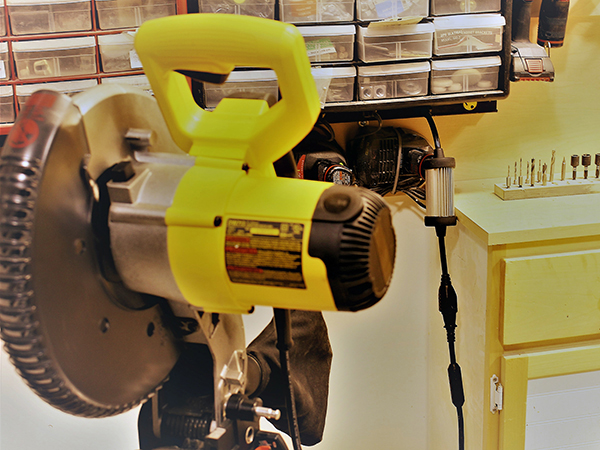
The device is also compact and unobtrusive: the 4-in.-long, under-2-in.-dia. heat exchanger and 16-in. length of power cord tethered to it weighs 13.4 ounces. But, there are a couple of operational caveats to the “A10” — Soft Starter’s current model iteration. First, the aluminum cylinder builds up heat during use, and the temperature will continue to rise during tool operation.
“We’ve established a 5-minute maximum runtime from cold to protect Soft Starter’s cord insulation,” Hansen says. So, the A10 is designed for intermittent use. If you’re planning to use your router or universal-motor table saw or planer for extended periods, it should be used separately from Soft Starter.
Second, the device is designed for 120-volt, universal motors only. Tools with induction motors (such as found on most stationary machines — if it’s wired for 220 volts or can be re-wired for 220, it’s an induction motor) aren’t suitable for Soft Starter.
Hansen and his team are working on eight more versions of Soft Starter now, including the “A10E.” It will have no runtime limitation and can provide a full soft start cycle every one to two minutes, Hansen says. “The A10E will be more costly (than the A10) but better suited for jobsites or heavy-use tools.”
He hopes to have the A10E available by Fall 2019.
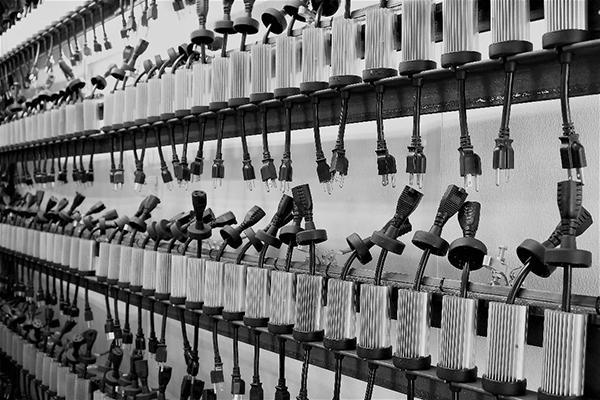
The A10 Soft Starter sells for $29.99 and is backed by a limited lifetime warranty. It can be purchased on the company’s website (www.thesoftstarter.com) or its Facebook page. You’ll also find an A10 demonstration video there. Hansen says Soft Starter will soon be available through other e-commerce sites as well, when dealer channels for retailers are finalized.
Soft Starter’s “plug and play” ability to extend tool longevity, while making power tools less threatening and more comfortable to use, are its core benefits. Hansen is also pleased that he’s developed an American-made, “noninvasive” solution that anyone can install, at a price that won’t be a burden for most tool users.
“An affordable price point of $30 or less has been a top priority for the A10 since the very beginning,” Hansen says. “We are thrilled that we have been able to maintain this and provide such a great value.”
To learn more about Soft Starter, click here.
